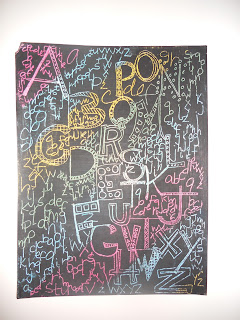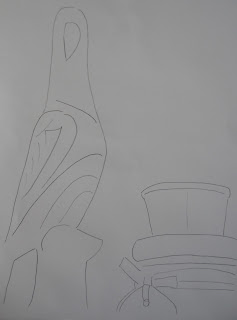Mandala:
Oriental Art . a schematized representation of the cosmos,chiefly characterized by a concentric configuration ofgeometric shapes, each of which contains an image of adeity or an attribute of a deity.
Dictionary.com
Here is my little Mandala. Now, I realize that the things that make up my life are no "deity", but they are a part of my universe, so that makes them important none the less. So, If you're curious as to who "Haley" is, all one needs to do is simply take a closer look. I know my drawing abilities are sorely lacking in skills so I'd like to offer a little bit of an explanation.
The camera represents my love for photography. I first fell in love with photography when my sister brought home here black and white prints from a photo class she was in in high school. I followed tradition and sought out such a class upon entering high school. From inserting the film, to clicking the button, to reeling my film, though development, to printing I feel in love with making my own photos. I now continue to pursue photography as a hobby and I dream of one day having my own dark room.
I love to ski! The ski snowflake is how I decided to portray this very time consuming love of mine. I have been skiing Utah since the age of 3 and intend to do so the rest of my life.
When it's not ski season...get out and road bike. I am a more recent convert to road biking, but when I'm riding (especially in Cache Valley) I enjoy every minute of it. My bike's name is Sandra, or Sandy for short. We've had some great times together.
Gilmore 4 Life. I am an avid "Gilmore Girls" fan. I cried when it ended. I am a proud owner of all the seasons and I am constantly cycling though them time after time. And in now way is that sad.
The muddy shoe print expresses my love of hiking. The greatest way that I know of to get away from the demands of the day-to-day and clear ones head is to get into the mountains. Hiking provides a refreshing escape for me. Nothing can compare to fresh mountain air.
Hello Kitty's face. Need I say more? If the mere sight of Hello Kitty does not make you smile then...I can't even come up with a situation for that. She's great. I love Hello Kitty. I have always been a fan and always will be. She adorns my apartment in ever room.
A good old fashioned vanilla ice cream cone. Definitely my favorite dessert. I'm never not in the mood for an ice cream cone.
If you couldn't already tell from the above, I love Utah. It's nerdy, but I genuinely enjoy living in Utah year round. I love all four-seasons and everything they have to offer. I'm also Utah born and raised. I think that's kind of cool. I don't know where life will lead me, but I hope to end up back here. Utah is home to me.
Admit one!...I love movies. I love going to them, renting them, buying them, having nights dedicated to viewing them. I love movies.
That completes my Mandala for now. But as you know, as I grow so will my Mandala. It's something I'll be adding to for the rest of my life.






























